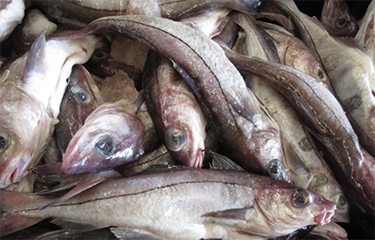The New England Fishery Management Council is asking the U.S. National Marine Fisheries Service for an emergency action to boost the 2023 allowable catch of haddock in the Gulf of Maine and avoid early shutdowns.
Emergency action to temporarily boost the Gulf of Maine haddock catch is needed to avoid potential shutdowns during the 2023 groundfish fishing year that starts 1 May, the New England Fishery Management Council said.
The council is asking the National Marine Fisheries Service to take emergency action “to address a critical Gulf of Maine haddock situation that is expected to result in significant fishery impacts during the 2023 groundfish fishing year,” according to a statement issued Thursday, 20 April, as the council wrapped up a three-day meeting at Mystic, Connecticut, U.S.A.
In a release, the council acknowledged “fishermen have been encountering Gulf of Maine haddock at very high catch rates.”
“The proposed 2023 annual catch limit, however, is extremely low,” it said.
Fishermen testifying at the hearing warned an early shutdown of the fishery is very likely, with major impacts as a result.
Even without targeting haddock, fishermen need haddock quota to account for bycatch while harvesting other species. The haddock quota as now proposed is part of Framework Adjustment 65 to the Northeast Multispecies Fishery Management Plan for 2023-2025, which is now undergoing review at NMFS.
In a detailed explanation, council officials offered their rationale for voting to ask NMFS for an increase in the allowable biological catch. The motion approved by members recommends emergency action to set the Gulf of Maine haddock acceptable biological catch at 90 percent of the fishing mortality rate at maximum sustainable yield.
That would be an increase from the 1,936-metric-ton (MT) allowable biological catch now in Framework 36, with 75 percent fishing mortality rate, which is calculated to carry a 27.1 percent probability of overfishing.
Upping the rate to 90 percent would potentially result in a 2,281-MT acceptable biological catch, marking a 345-MT increase over what was submitted in Framework 65 – raising the probability of overfishing by 40 percent.
“While 345 MT of additional Gulf of Maine haddock wouldn’t be enough to sustain a widescale targeted fishery, industry members told the council it would increase their ability to work on other species longer into the fishing year with more haddock available to cover bycatch or unintentional large haddock tows,” according to the council.
Haddock are assessed at 270 percent of the council’s target biomass, so members said the temporary boost is well within their risk tolerance, and “will provide much needed economic and social relief for both the commercial and recreational components of the groundfish fishery and their dependent communities.”
While overfishing is occurring, the stock at 270 percent of target is not overfished, according to the council.
After looking at recent catch rates, it appears that a Gulf of Maine fishery closure could happen as soon as August, the council said. Council officials said they are “unwilling to risk a 2023 Gulf of Maine fishery closure simply to conduct its standard rulemaking process given that emergency action in this situation was warranted.”
Reporting by Kirk Moore
Photo courtesy of New England Fisheries Management Council







